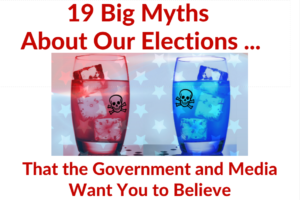Adapted from Article Published by Truthout, April 4, 2017
by Jonathan D. Simon
If we are to go by the polls, Donald Trump has the look of a one-term president. After two tumultuous months in office, Trump’s approval rating hovers around 40%, an historic low for this stage of a presidency. And the eye test confirms what the numbers tell us: floods of letters and petitions, massive protests, packed town halls, parades, and relentless media reportage of and comment upon daily, if not hourly, missteps, lies, and scandals. It is a multi-dimensional train wreck of undeniably epic proportions, with some already openly speculating about rescue via impeachment or perhaps the removal provisions of the 25th Amendment.
But American democracy does not run on polls, or on the eye test. It runs on elections, the periodic and infrequent right of review granted to (or reserved by, depending how one looks at it) the people. When the people vote and the votes are counted, that is the reality and in a sense the only reality, the push-come-to-shove of American politics. As we just witnessed in 2016, everything else, like a murky abstract or impressionist painting, gives way before this biennial Election Night portrait painted by a photo-realist working in reds and blues. Polls (“RIGGED!”), investigations and reports (“FAKE NEWS!”), protests and parades and whole libraries of criticism (“THE CHATTERING CLASSES!”), are subject to jeering dismissal: “WE WON. YOU LOST. GET OVER IT!” This is the power of elections and of the tally of the votes, and it is all but absolute. Given what is now all too obviously at stake, one would think that Americans of all persuasions would be hell-bent on maximizing the chances that the votes are counted honestly and accurately at their next opportunity to weigh in—when it counts.
Advocates for election integrity are prone to ask anyone who might be listening whether he or she would trust an election, say for a union rep, where all voters in the room handed their ballots to a man who took them behind a curtain to count them, emerging sometime later to announce who won. Hardly anyone answers that they would trust such an election or accept its results, even if the man later went back behind the curtain and brought out a stack of ballots for “recounting” in front of everyone: how would the voters know that the original stack had not been replaced by a new one?
The computerized process by which America now counts virtually all of it votes strongly resembles the man-behind-the-curtain scenario, writ large. Votes are tallied not in public but in the pitch dark of cyberspace. A lot can happen in cyberspace, from foreign meddling to home-grown malicious programming. Although we regard ourselves as the “beacon of democracy,” according to the Harvard-based Electoral Integrity Project, US elections now rank very low on the security and integrity scales. A major contributor to our dismal ranking is the absence of uniform and effective protocols for publicly verifying computer-tabulated results.
The fix for this is not difficult or unduly burdensome—it is not like bringing about nuclear disarmament or implementing the solutions to climate change! We could simply join the Canadians, the Germans, and now the Dutch (inspired by our recent electoral fiasco) in counting our votes observably in public by hand. Or if, given the greater length of our ballots, we would deem the labor and delay to be deal-breakers, we could institute risk-limiting audits (RLAs), performed in public view on Election Night, to detect (and deter) any outcome-altering mistabulations that might occur behind the cyber-curtain.
Risk-limiting audits are an especially easy and convenient fix because they are designed to sample and count very few ballots (often just a few hundred for a whole state) except in the rare cases in which the apparent margin of victory is very small. Experts agree that they would be easily implemented, effective, and cost-efficient. What has been missing up until now is the political will to restore this essential component of transparency to our electoral process. Positive and meaningful electoral reform requires an extra helping of public insistence, precisely because elected officials, especially those in the majority, tend to be reluctant to alter a system that put them in office. Public insistence, in turn, might take the form of ballot propositions and/or the newly rediscovered economic leverage of mass consumer, labor, and tax-related actions—hitting hard below the national and corporate money belt. For better or worse, modern America is about money, and corporate bottom-lines are exquisitely sensitive to targeted actions. If organized effectively, the people have far more power than most of us realize.
Now, with vulnerability to foreign interference a new and grave concern, with overall trust in the electoral process slipping fast, and with Donald Trump himself keeping the issue front and center by insisting that he would have won the popular vote but for electoral fraud, the time may finally be ripe for change. If we can effectively channel some of the roiling new political energy into insistence upon this very basic reform, we will greatly increase the likelihood that the voice of the people will be heard and counted when it really counts.

